I am trying to apply the perspective information for unshearing the image using open cv . I had converted the image to black and white and then passes it to the model which is working fine . It is displaying the white mask which is actually the output . How can I display its original object of image instead of mask , it is throwing the index error.
**Code: **
import cv2
import numpy as np
def find_corners(im):
# Find contours in img.
cnts = cv2.findContours(im, cv2.RETR_EXTERNAL, cv2.CHAIN_APPROX_NONE)[-2] # [-2] indexing takes return value before last (due to OpenCV compatibility issues).
# Find the contour with the maximum area (required if there is more than one contour).
c = max(cnts, key=cv2.contourArea)
epsilon = 0.1*cv2.arcLength(c, True)
box = cv2.approxPolyDP(c, epsilon, True)
tmp_im = cv2.cvtColor(im, cv2.COLOR_GRAY2BGR)
cv2.drawContours(tmp_im, [box], 0, (0, 255, 0), 2)
cv2.imshow("tmp_im", tmp_im)
box = np.squeeze(box).astype(np.float32)
# Sorting the points order is top-left, top-right, bottom-right, bottom-left.
# Find the center of the contour
M = cv2.moments(c)
cx = M['m10']/M['m00']
cy = M['m01']/M['m00']
center_xy = np.array([cx, cy])
cbox = box - center_xy # Subtract the center from each corner
ang = np.arctan2(cbox[:,1], cbox[:,0]) * 180 / np.pi # Compute the angles from the center to each corner
# Sort the corners of box counterclockwise (sort box elements according the order of ang).
box = box[ang.argsort()]
# Reorder points: top-left, top-right, bottom-left, bottom-right
print('bbox',box)
coor = np.float32([box[0], box[1], box[3], box[2]])
return coor
input_image2 = cv2.imread("/home/hamza/Desktop/cards/card2.jpeg", cv2.IMREAD_GRAYSCALE) # Read image as Grayscale
input_image2 = cv2.threshold(input_image2, 0, 255, cv2.THRESH_OTSU)[1] # Convert to binary image (just in case...)
# Find the corners of the card, and sort them
orig_im_coor = find_corners(input_image2)
height, width = 450, 350
new_image_coor = np.float32([[0, 0], [width, 0], [0, height], [width, height]])
P = cv2.getPerspectiveTransform(orig_im_coor, new_image_coor)
perspective = cv2.warpPerspective(input_image2, P, (width, height))
cv2.imshow("Perspective transformation", perspective)
cv2.waitKey(0)
cv2.destroyAllWindows()
Original Image
Black and white image
Expected Output: The output I am getting is white mask from code which is fine but I want to take the image of that particular mask . How can I access it ?
If it is not possible using this approach , How can I do it from some other approach ?
Edit 1: Code returning the output after unshearing the image as shown below in the image , I have to put that particular mask on that output image which I give it as a input of mask from that specified image
Code returning output now . Below Output image is white please press on the image it will display you otherwise background is also white and it will not proper display you :





